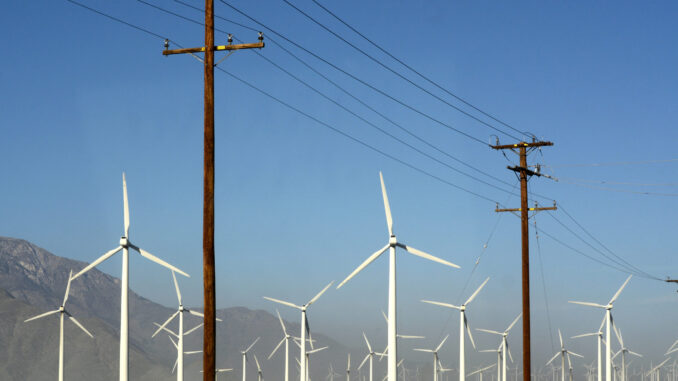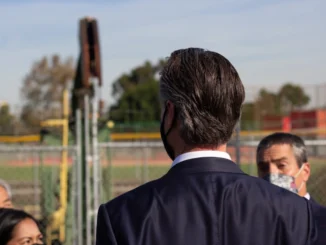
California and New York, two national leaders in the effort to curb global warming, could both miss key 2030 climate targets, according to state officials. It’s a sign that even the states most aggressively pursuing plans to reduce carbon emissions and ramp up clean energy development are struggling to meet tough deadlines aimed at averting runaway climate change.
The warnings also highlight the larger debate surrounding permitting reform, and whether governments should be doing more to speed up the approval of renewable energy projects to meet ambitious climate targets.
Both California and New York have been praised for having some of the most ambitious policies on the books to reduce carbon emissions and develop renewable energy. Under state law, both New York and California must reduce their emissions 40 percent below 1990 levels by 2030. California officials increased that emissions reduction target—though not legally—to 48 percent last year. New York also mandates that 70 percent of its electricity come from renewable sources by that year, with California requiring 60 percent.
But a new report released Tuesday by New York’s comptroller office warned that the state is off track to meet its 2030 renewable energy target. Specifically, the report said, New York must triple its renewable energy capacity in just seven years to achieve that mandate. California officials issued similar warnings last week, according to reporting from the Sacramento Bee, saying the state could fail to achieve its 2030 target to reduce emissions by 48 percent. The legally-mandated 40 percent target is still within reach, they added.
Both New York and California officials have expressed concerns about achieving their states’ climate goals by the quickly-approaching deadline, pointing to funding gaps, unexpected costs, canceled projects and permitting and interconnection delays that they say are slowing down their efforts. Both have also attempted to speed up the expansion of clean energy by passing new policies and legislation that would streamline the approval of renewable projects, which Democrats say often take far too long due to current environmental review standards.
A transmission line between Arizona and California that aims to deliver electricity produced from renewable sources, for example, was first proposed in 2015 but won’t be fully online until 2025, largely because of lengthy regulatory approvals.
“The only way to achieve California’s world-leading climate goals is to build, build, build—faster,” Gov. Gavin Newsom said in a May press release, announcing a new state proposal to streamline clean energy permitting. “This proposal is the most ambitious effort to cut red tape and streamline regulations in half a century.”
That month, New York also passed a law that attempts to speed up clean energy development, allowing the state’s power authority for the first time to build renewable energy projects.
In fact, speeding up environmental reviews for clean energy projects and the long transmission lines needed to deliver their electricity has become a priority among Democratic leaders in Congress and at the White House. Last Friday, the Federal Energy Regulatory Commission approved a major new rule to accelerate the connection of energy projects to the power grid, which could ease widespread delays stifling new clean energy projects. That same day, the White House Council on Environmental Quality announced its own draft rule to hasten the permitting process under the National Environmental Policy Act, known as NEPA, for efforts such as wildfire management, electric vehicle charging infrastructure and offshore wind.
New York State Comptroller Thomas DiNapoli, in his Tuesday report, specifically pointed to delays in siting permits and interconnection approvals as some of the biggest hurdles to New York achieving its 2030 clean energy target. While New York has made progress in speeding up those processes, he said, more must be done by state agencies and government officials to consistently fund and advance renewable projects.
Environmental justice groups have been especially opposed to permitting reform, saying streamlining any major energy projects—even renewables—could harm vulnerable communities that are more likely to live near where the projects are built, while also making it more difficult for those communities to voice their needs and concerns to regulators.
The Biden administration responded last week by including a provision in its new rules that encourages federal agencies to limit projects’ impacts on climate change and on communities already burdened by pollution. “This rule is a key element of President Biden’s permitting reform agenda that will help us speed the build-out of our clean energy future,” CEQ Chair Brenda Mallory said in a press release, “while reducing pollution and harms in communities that have been left out and left behind for far too long.”
Reporter, New York City
Kristoffer Tigue is a New York City-based reporter for Inside Climate News, where he covers environmental justice issues, writes the Today’s Climate newsletter and manages ICN’s social media.



